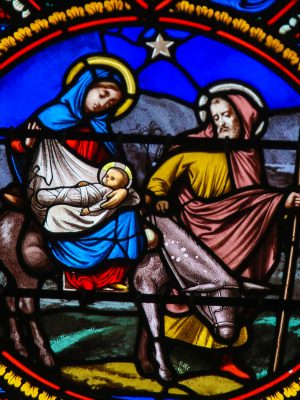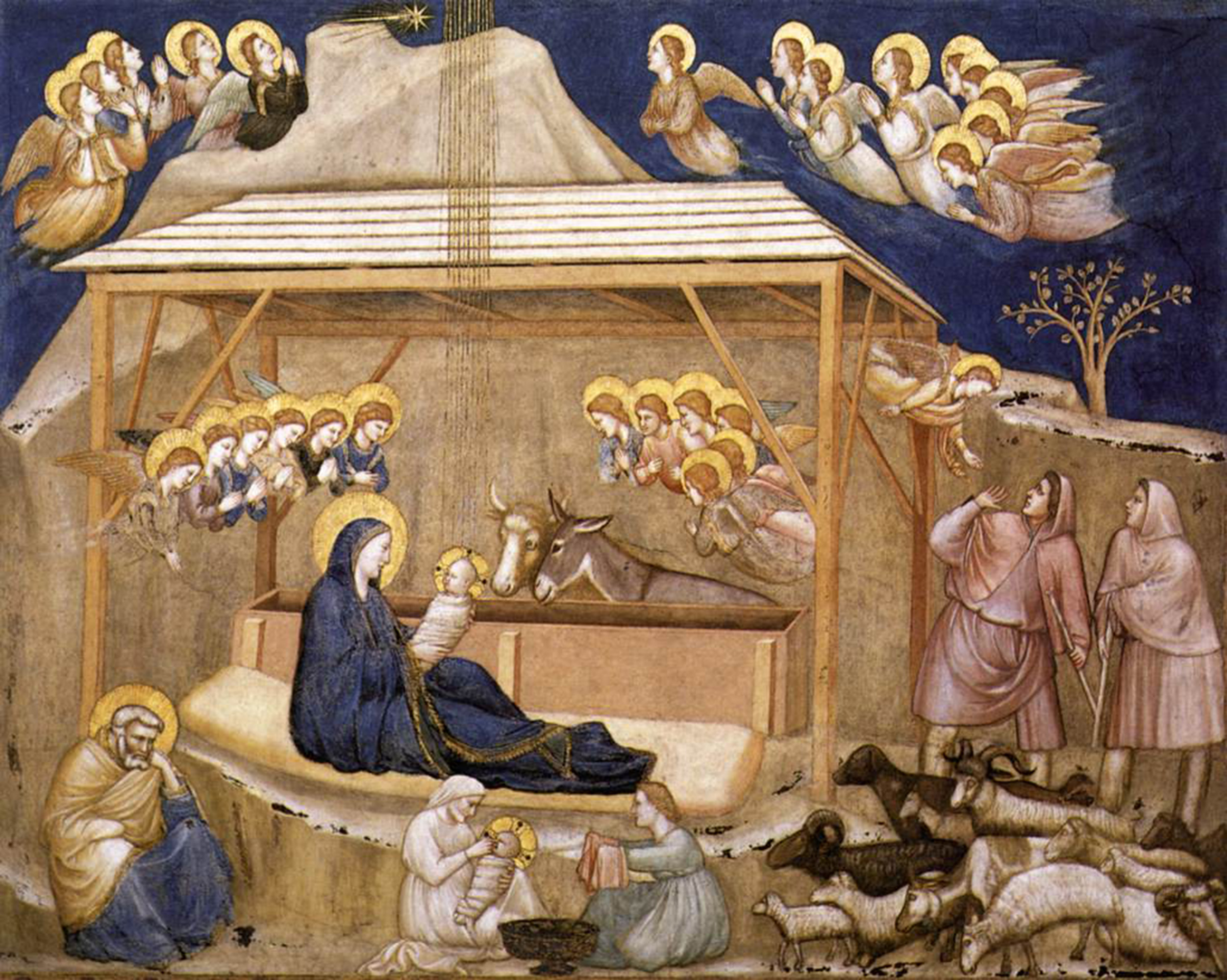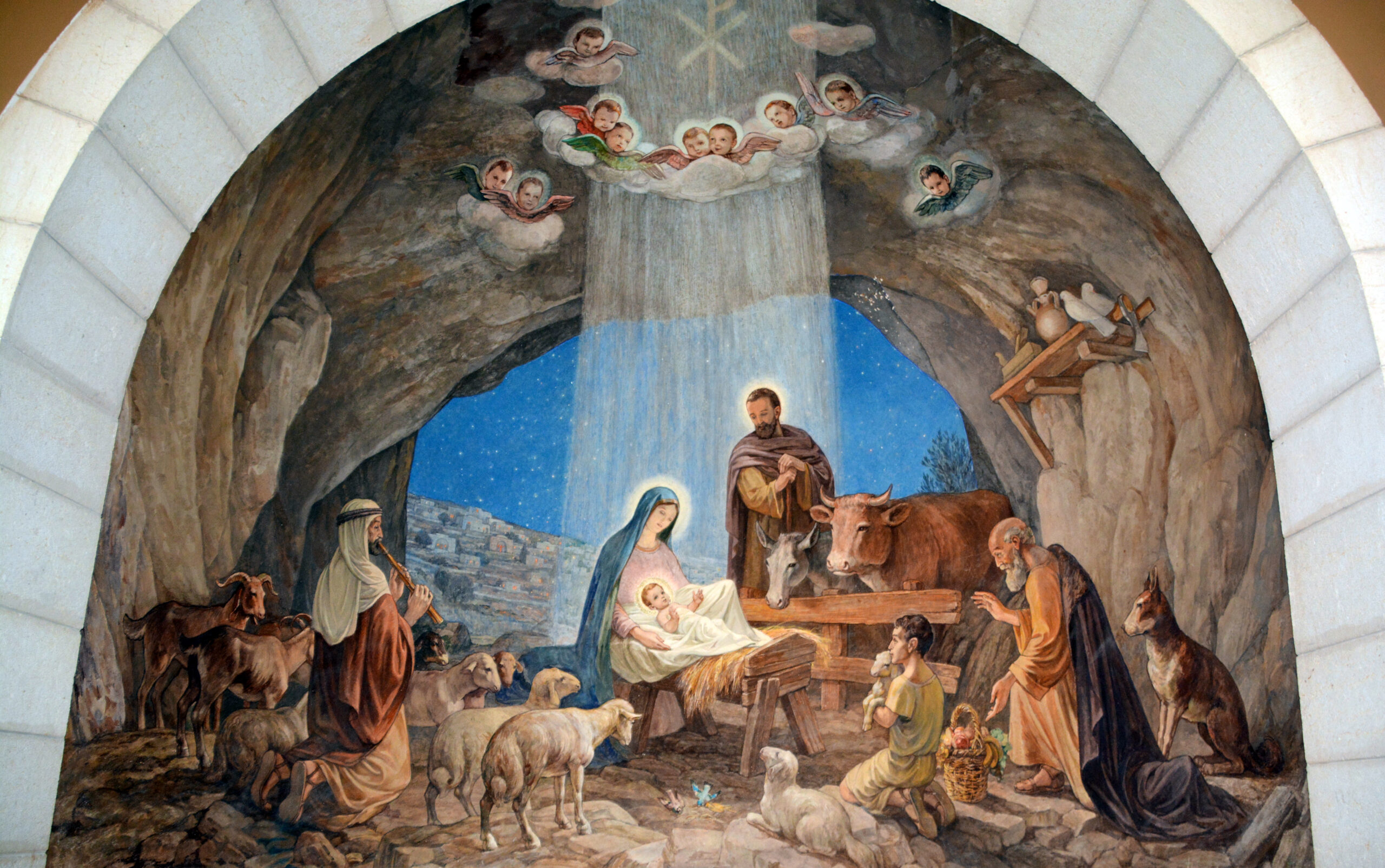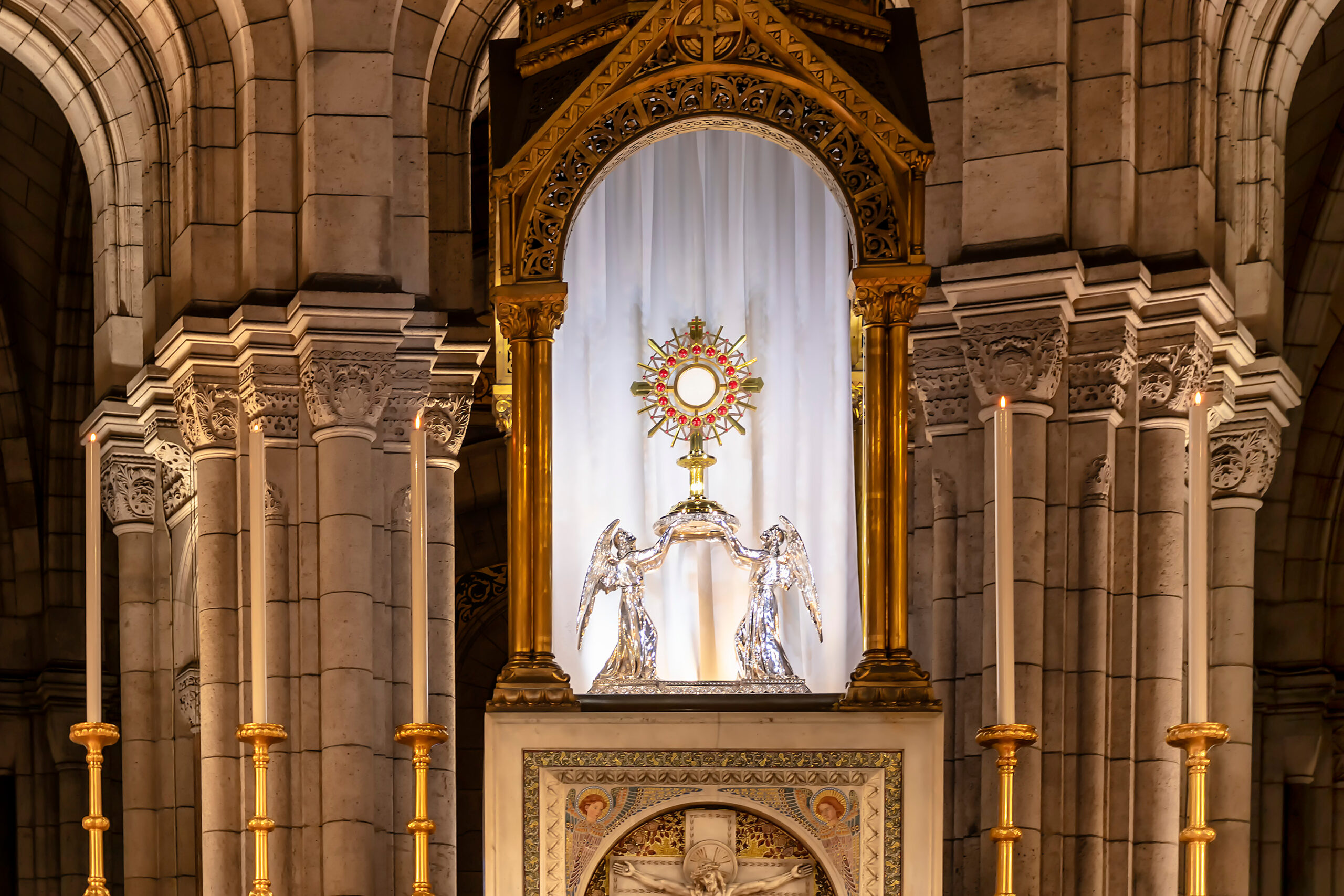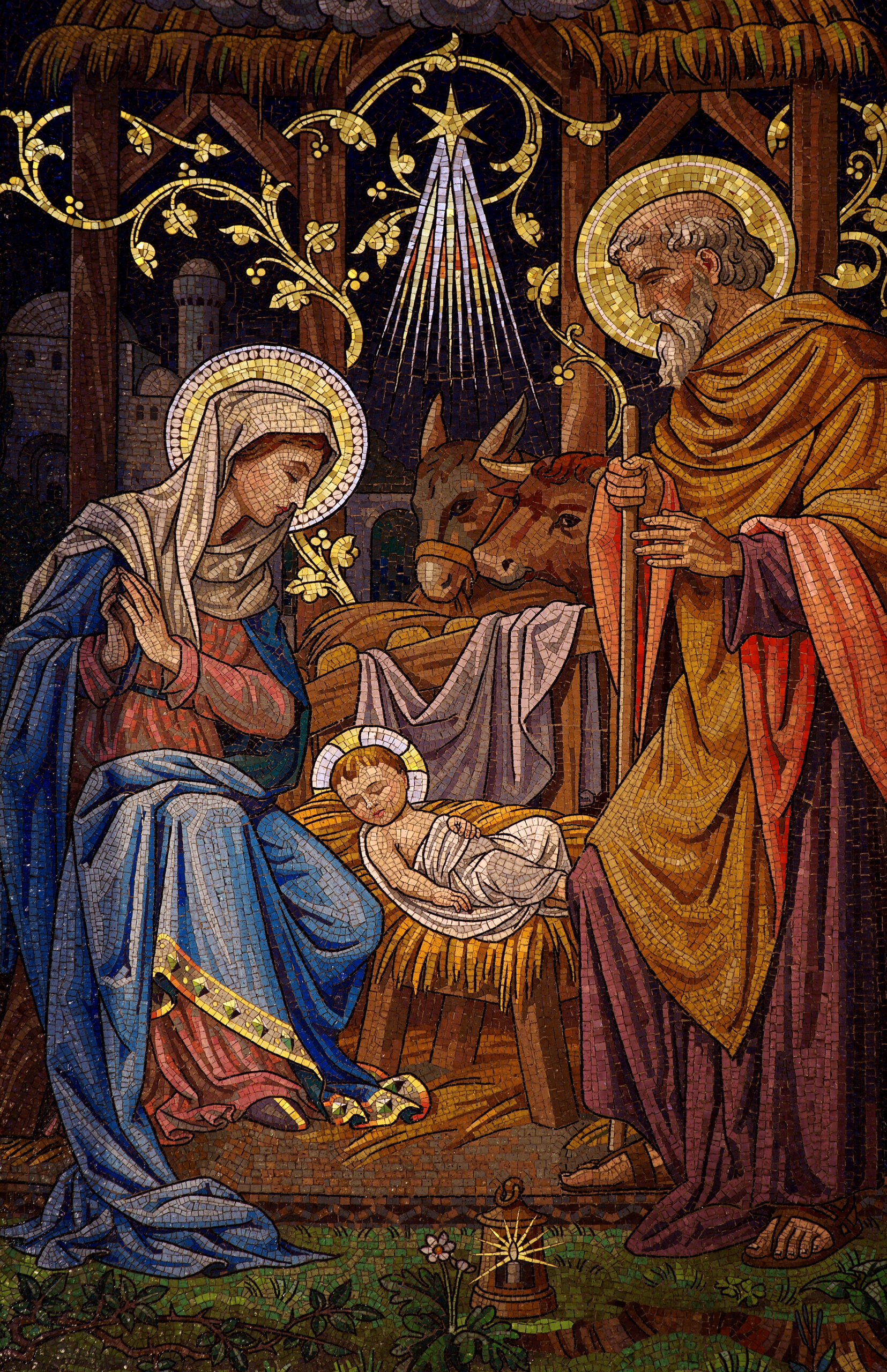Christmas has always been celebrated with extraordinary solemnity, brining to mind the hour when the Holy Mother gave birth to Christ, an event that has been recalled through the centuries with the most fervent prayers and vigil watchings.
Over the centuries the story of Christmas has been recorded in certain select extra-biblical works that are greatly revered today. Some of these are liturgical and paraliturgical sources that reach back many centuries.
All through the Christmas season Catholics revisit the mysteries surrounding the season, considering again and again the joy of Christmastide well into the new year.
The Roman Martyrology
Although not well known to most Catholic laity, one of the most important Catholic books is the Roman Martyrology, a must for every Catholic home.
This precious book keeps the record of the anniversaries of certain martyrs and other saints, mysteries, and events that are commemorated yearly in the life of the Church.
The Roman Martyrology is essentially a calendar that has appeared in various editions over the subsequent centuries. The first edition was drawn up in Italy in the middle of the fifth century.
The entry for Christmas Day contains an ancient proclamation known as the “Christmas Proclamation.” This devotional text is of venerable age and is part of the corpus of Church literature that all Catholics should be familiar with.
It is important to note the text is short and is not necessarily a work of science. It is historical and devotional, establishing a timeline to the most monumental event in the history of the world, the Incarnation of the Son of God.
Given that the Martyrology is a book for the Universal Church of the Roman Rite, the entry for Christmas Day is read in the Vatican before the Papal Christmas Midnight Mass. This local tradition is kept in many other parishes across the globe, for example, at the church of Saint Agnes in St. Paul, Minnesota.
It reads thus:
“In the 5199th year of the creation of the world, from the time when God in the beginning created the heaven and earth; the 2957th year after the flood; the 2015th year from the birth of Abraham; the 1510th year from Moses, and the going forth of the people of Israel from Egypt; the 1032nd year from the anointing of David King; in the 65th week according to the prophecy of Daniel; in the 194th Olympiad; the 752nd year from the foundation of the City of Rome; the 42nd year of the rule of Octavian Augustus, all the earth being at peace, Jesus Christ, the Eternal God, and the Son of the Eternal Father, desirous to sanctify the world by his most merciful coming, being conceived by the Holy Spirit, nine months after his conception (here the voice is raised, and all kneel) was born in Bethlehem of Juda, made Man of the Virgin Mary. (What follows is said in the ordinary voice, but in the tone of the Passion): The Nativity of our Lord Jesus Christ according to the Flesh” (cf. The Roman Martyrology, p. 279).
The Office of Prime on Christmas Eve
Priests and seminarians in traditional communities are familiar with the Martyrology. The Martyrology is read at the Office of Prime in the traditional version of the Roman Breviary (associated with the Extraordinary Form of the Roman Rite). This venerable practice dates back to the ninth century.
Generations of monks and seminarians and canons in cathedrals in the West have recited the Christmas Proclamation, chanted in choir at the Office of Prime, sung in beautiful melody with unusual solemnity.
The lector sings the lesson while all the assistants remain standing in their choir stalls until the moment when the lector comes to the part “was born,” at which all genuflect and continue in that posture until all the glad tidings are told.
The World at Peace on the First Christmas Night
When Christ was born the emperor was Caesar Augustus (63 BC – 19 AD). He was also known as Octavian Augustus and was the first Roman Emperor, the founder of the Roman Principate, the first phase of the Roman Empire.
He is remembered as one of the most effective leaders in human history. His reign initiated an era of relative peace known as the Pax Romana when the Roman world was free of large-scale conflict, after years of continual wars of imperial expansion.
The text of the Proclamation makes mention that Christ was born during the reign of the Roman Emperor Octavian Augustus while the whole world was at peace (“toto orbe in pace composito”). This brings to mind the prophecy of Christ in Isaiah 9:6-7, where the birth of the Divine Infant is recalled, who is to be born amongst us, the Mighty God, the Prince of Peace, whose government is upon his shoulders. Verse seven reads:
“His empire shall be multiplied, and there shall be no end of peace: he shall sit upon the throne of David, and upon his kingdom; to establish it and strengthen it with judgment and with justice, from henceforth and forever: the zeal of the Lord of hosts will perform this” (cf. Isaiah 9:7).
Proof of this peace was in the city of Rome itself, in the Roman Forum where there was a temple dedicated to the false god Janus. This ancient temple was first created by the second king of Rome, Numa Pompilius.
Particular to this temple were a set of doors called the “gates of war.” These were kept open when Rome was at war, which was nearly all the time, and closed during rare times of peace. In fact, before the rule of Augustus, the gates were closed only twice in the long history of Rome.
During the reign of Augustus, however, the gates were closed a remarkable three times. Paulus Orosius, a Roman priest, historian and student of St. Augustine, assigned the third and last closing to the time of the birth of Christ:
“Also so, in the 752nd year from the foundation of the City of Rome, Caesar Augustus…then himself closed the Gates of Janus for the third time… Therefore at that time – in other words, in that year in which, ordained by God, Caesar arranged the most firm and most true peace – Christ was born” (Cf. In Paganos, 6.22.1,5).
The Timeline of History
“Thus have passed before us, in succession, all the generations of the world.” Readers will note the text touches on the generations and age of the world. How old is the world?
The announcement draws upon Sacred Scripture, beginning with the creation and relating the birth of the Lord to the major events and personages of sacred and secular history, helping to place the event of the Incarnation into the context of salvation history.
On this note, the great nineteenth century liturgical scholar Dom Prosper Gueranger comments,
“On this one day alone, and on this single occasion, does the Church adopt the Septuagint Chronology, according to which the birth of our Savior took place five-thousand years after the creation; whereas the Vulgate version, and the Hebrew text, place only four-thousand years between the two events. This is not a fitting place to explain this discrepancy of chronology; we merely allude to it as showing the liberty which the Church shows us on this question” (cf. The Liturgical Year, December 24).
In truth, each version although having a different timeline prepares us to see Him who we are expecting, despite the exact details of the age of the earth. The point is, in the fullness of time was proclaimed the Nativity of Christ, the Son of God made man for the salvation of the world.
St. Bernard spoke of the announcement of the birth of Christ when he wrote of its true meaning and importance – the actual event that took place in history – not the age of the earth or the exact date or timeline of events:
“The voice of joy has gone forth in our land, the voice of rejoicing and of salvation is in the tabernacles of the just. There has been heard a good word, a word that gives consolation, a word that is full of gladsomeness, a word worthy of all acceptance. Resound with praise, ye mountains, and all ye trees of the forests clap your hands before the face of the Lord, for he is coming. Hearken, O ye heavens, and give ear, O earth! Be astounded and give praise, O all ye creatures! But thou, man, more than all they! Jesus Christ, the Son of God, is born in Bethlehem of Juda! Who is there, that is so hard of heart, that this word does not touch him? Could anything be told us sweeter than this? Could any news delight us like this? Was such a thing ever heard, or anything like it ever told to the world? Jesus Christ, the Son of God, is born in Bethlehem of Juda! O brief word of the Word abridged! [Romans 9:28] and yet how full of heavenly beauty! The heart, charmed with the honeyed sweetness of the expression, would fain diffuse it and spread it out into more words. But no, it must be given just as it is, or you spoil it: Jesus Christ, the Son of God, is born in Bethlehem of Juda!” (cf. St. Bernard Sermons, Second Sermon for Christmas Eve).


